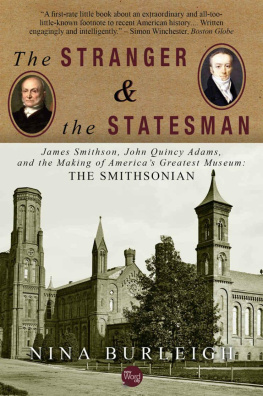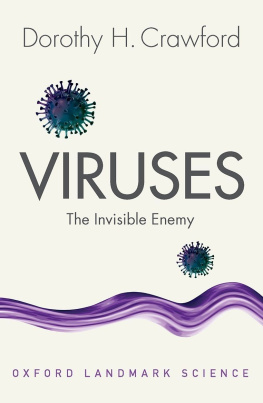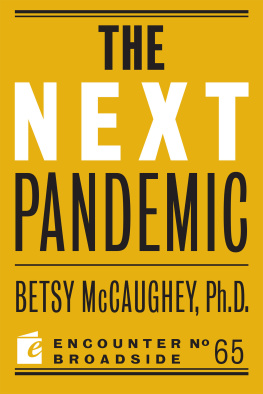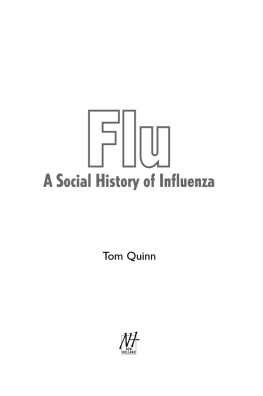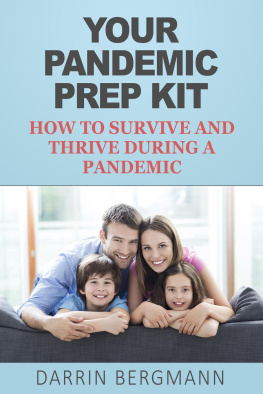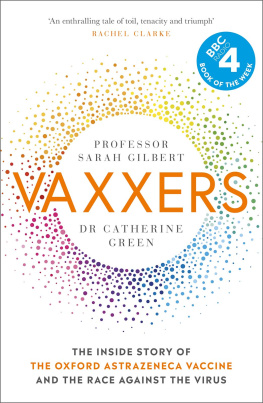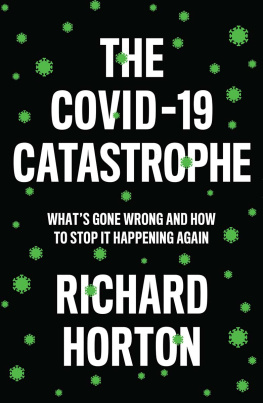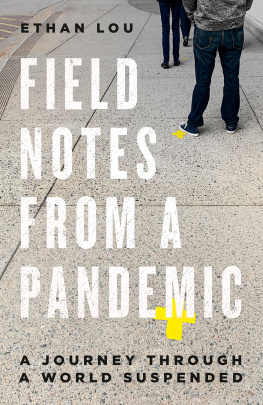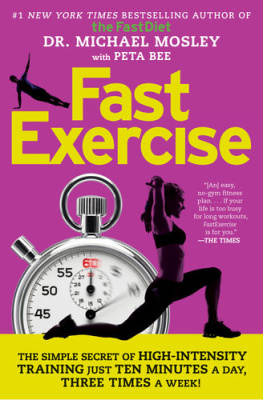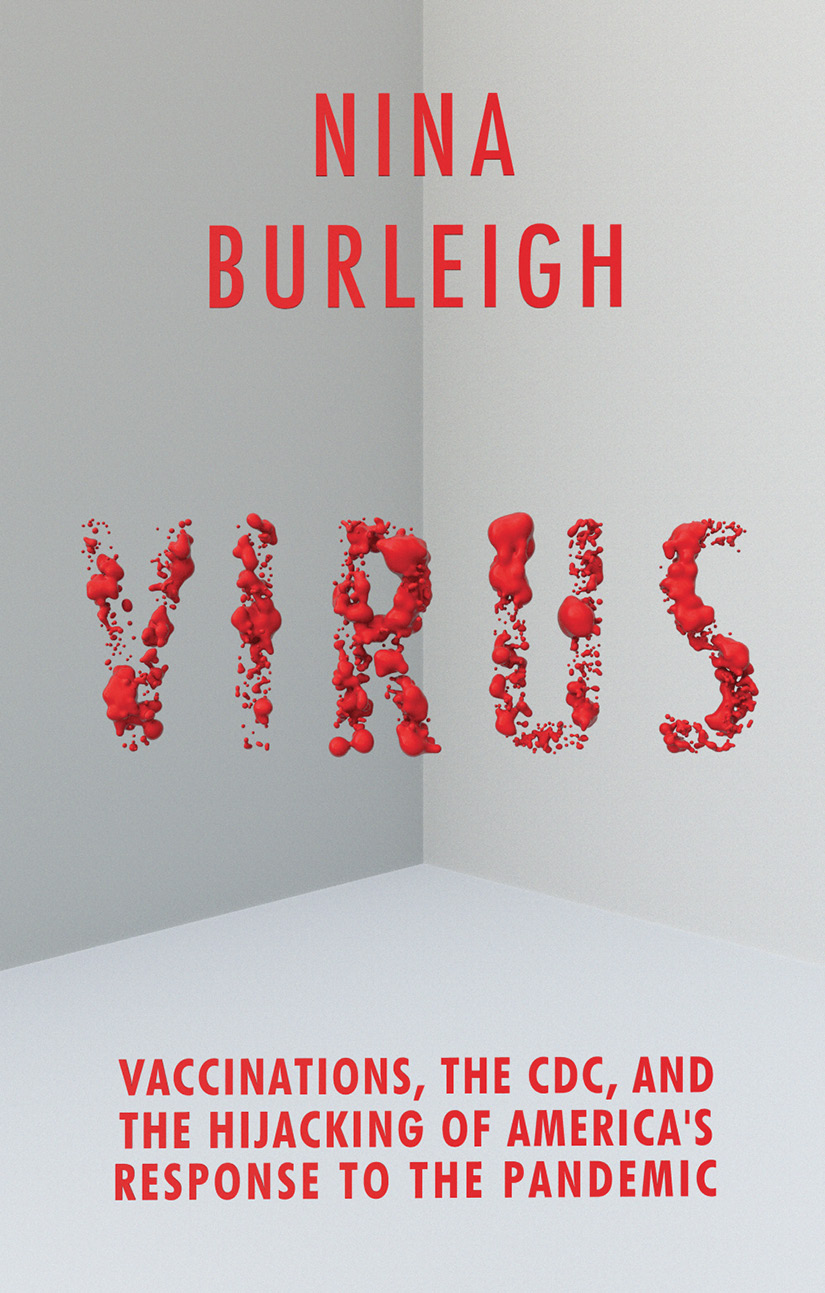VIRUS
Vaccinations, the
CDC, and the Hijacking
of Americas Response
to the Pandemic
NINA BURLEIGH
Seven Stories Press
New York Oakland London
Copyright 2021 by Nina Burleigh
All rights reserved.
No part of this book may be reproduced, stored in a retrieval system, or transmitted in any form or by any means, including mechanical, electronic, photocopying, recording, or otherwise, without the prior written permission of the publisher.
Seven Stories Press
140 Watts Street
New York, NY 10013
www.sevenstories.com
College professors and high school and middle school teachers may order free
examination copies of Seven Stories Press titles. To order, visit www.sevenstories.com or send a fax on school letterhead to (212) 226-1411.
Library of Congress Cataloging-in-Publication Data has been applied for.
ISBN: 978-1-64421-180-9 (hardcover)
ISBN: 978-1-64421-181-6 (ebook)
Contents
Chapter 1
Chapter 2
Chapter 3
Chapter 4
Chapter 5
Preface
One of my first instincts in the surreal early days of lockdown in March 2020 was to hunt down my dog-eared, yellowed, graduate school paperback copy of Daniel Defoes A Journal of the Plague Year . Glued to it for long hours that week, and returning to it occasionally over the course of the past year, I kept being struck by how little has changed in the three and a half centuries since the epidemic that decimated London in the 1660s. Everything, from the nature of and response to the early rumors to the growing sense of unease and the closing of houses of entertainment, from the quack cures and conspiracy theories to the rich fleeing the city and the poor dying in it, from mental health breaking down and mad, cooped-up people breaking free of quarantine and roaming the streets in violation of curfews and sanitary rulesall of it. Just like us. How little the human race has changed since those days without plumbing, electricity, jets, or antibiotics.
And yet, of course, we have evolved in one very significant way: unlike those poor Londoners and every other human being on earth faced with infectious disease epidemics since before recorded history, in 2020 wethe whole planetknew exactly what was stalking us within weeks of the first deaths: a spiked-protein microbial pathogen. And we had the means, thanks to advances in scientific understanding in the last century and a half, and especially to leaps made in the first two decades of the twenty-first century, to fight back in an array of ways, and then to (hopefully) close this chapter with new vaccines produced in record time.
My aim in this book is simple: to record how we responded to this pandemic, as a society and scientifically, so that we will be sure to do better the next time. More pathogens are on their way, probably at an increased rate, as I explain in chapter 5. We have the means to fight back with a power unlike what any of our ancestors could bring to bear. But are we on a path to avoid half a million American deador morethe next time around?
The chaotic sequence of events that began in January 2020 and which continues to unfold today has been so unlike anything we as a society had ever experienced, so tragic, so disorienting, that it has been nearly impossible to absorb and make sense of the whole of it. Especially in the early months, when we were told to stock up and shelter, and as the first wave of death slammed New York, our state of shock distracted us from keeping track of what our leaders were doing. Graveone could say criminaldecisions and mistakes were made. The American habit of forgetting our defeats is ingrained in us, as medical anthropologist Martha Louise Lincoln, whom I quote in chapter 5, explains.
Because Ive spent chunks of my career covering American politics, including, for the last five years, the Trump administration, I have a strong foundational understanding of the ideological and political framework within which decisions get made in American government, including the religious and financial poles of power in which the pandemic response was hatched. But in real time no one journalist or team of journalists could have synthesized all the moving parts and come away saying: This is how it happened .
In order to write this book, I have tried to take a broad and balanced view of the pandemic response in government, in politics, and in culture. I studied granular reporting from inside US hospitals and reports issued by the WHO; I looked at what was happening at food banks and at local public health agencies. I watched the changes over the course of the year at the White House, at federal agencies in Washington, and at the great labs in Cambridge and Palo Alto and Bethesda. I also dipped into the fact-challenged universe of Fox News and YouTube and Reddit, because on another plane these places were also where Americas response to the pandemic was being shaped. I scoured hundreds of pieces of daily journalism and relied on some terrific investigative reporting, especially by Ed Yong in the Atlantic , and the teams at the New York Times and at ProPublica, and Katherine Eban in Vanity Fair .
I read a variety of books about the current state of American politics and political culture, the most significant being Jane Mayers Dark Money , Greg Grandins The End of the Myth , and Shoshana Zuboffs The Age of Surveillance Capitalism . Needless to say, we need both the daily reporting and the longer, more considered analysis that can only happen in books.
And I questioned myself, my assumptions, my fears and hopes. I could not have written this book had I thought I already knew most of the answers when I started.
Acknowledgments
I am grateful to the following people: Dan Simon for suggesting and editing this project; Vivian Zhong for schooling me on the science and for being an all-around sounding board. I also want to shout out my thanks to the rest of the Seven Stories team, especially Lauren Hooker, Jon Gilbert, Susan Steiger, Bill Rusin, and Ruth Weiner. I also want to thank Grey Puett for his deep dive into internet conspiracy theories. I very much appreciate the time and thoughts of Dr. Paul Offit, Robert Langer, Dr. Bruce Y. Lee, Dr. David Relman, Martha Louise Lincoln, Jessica Malaty Rivera, and Missy Pea. The work of the CDC investigative team at ProPublica and the pandemic health agency reporting in the New York Times were indispensable. Also: Stephanie Slewka, Ianthe Dugan, Jamie Gordon, Matthew Grace, Jason Baruch, Jay Kelly for providing the wood stove in the writer shack, Erik and Felix Freeland for wood-chopping.
Chapter 1
Smash the State
Id actually like to go back to the old times of Tudor England. Id put the heads on pikes, right? Id put them at the two corners of the White House as a warning to federal bureaucrats: You either get with the program or youre gone.
STEVE BANNON ,
urging the beheading of Dr. Anthony Fauci
There are many ways to begin to tell the story of why more Americans died of Covid-19, the disease caused by SARS-CoV-2, than in any other nation on earth. We could start at the Washington, DC, hospital with doctors amputating the lower leg of the White House chief of security, a man who caught Covid in Donald Trumps mask-free domain. Or we could talk to the families of forty-six veterans who died within days of each other in a Veterans Administration nursing home in Alabama. Or we could listen in on a therapy session with some of the New York City medics struggling with PTSD after helplessly watching some of tens of thousands of people die in a matter of weeks.


